10 Tips for the New Flower Gardener
10 Tips for the New Flower Gardener
If you’re new to growing flowers, we have some suggestions that will help you create color-filled gardens that bloom for a long time. But before you get into our Top Ten, here’s a bonus tip for those who are planting right now: The very day you put any new annual or perennial into your gardens, spray it with a liquid animal repellent such as Repels-All. The liquid, which coats the leaves of your new plants, tells all the rabbits that this is not on their menu! After that plant is dry, dust it with diatomaceous earth, aka DE. That prevents early damage from earwigs and slugs, who love the tender growth of new plants. If you do these things immediately after planting, and again one week later, your new annuals and perennials have a good chance to get established so that the DE is no longer needed. (Plants that bunnies love, such as zinnias, are best sprayed with a repellant through July.)
- How much sun have you got? The success of any garden depends on putting the right plant in the right place. For most landscapes, this means putting flowers that want full sun where they will get at least six hours of dead-on sun that includes the noon hour. Plants that flower in part-sun (four hours that include the noon hour), or part-shade (at least four hours of sun in early morning or late afternoon) are labeled as such, as are those varieties that do well in full shade. The pallet of flowers for sun is greater than it is for shade, but you’ll be happiest if the plants you choose grow well in the amount of light your landscape gets.
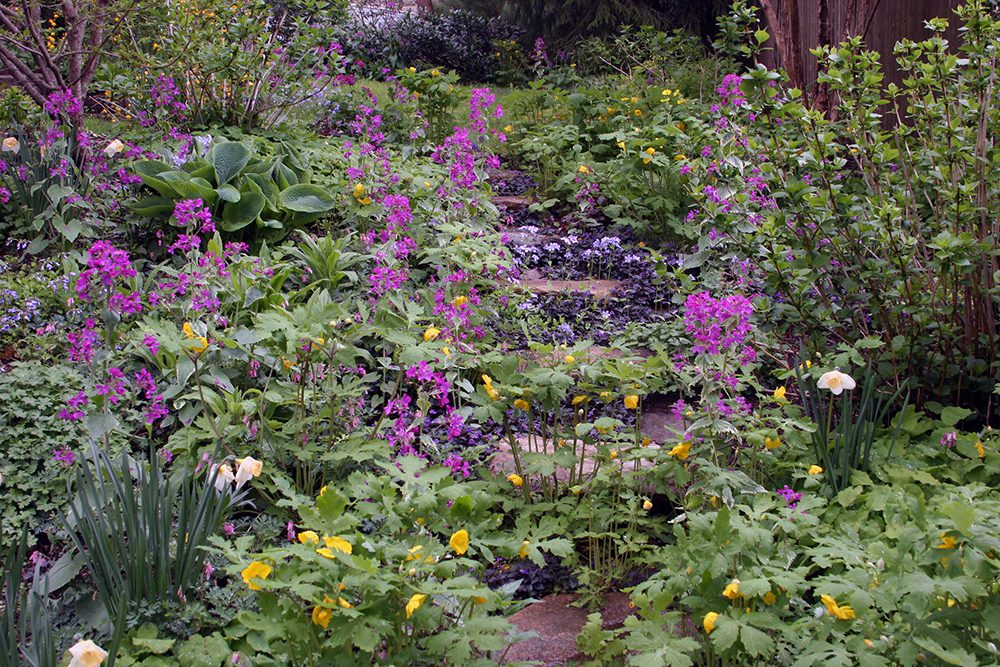
2. Improving the soil. Most gardeners on Cape Cod have sandy soil, but when you put any plant in the ground, from an annual to a tree, the best way to improve is to amend over an entire bed. In other words, don’t just improve a small hole because the roots of all plants grow beyond that area. Instead of adding compost or other organic matter to the hole, spread two or three inches of compost over the entire area before planting. When you put the plants in the ground, you’ll mix some of that in, but the rest will help from the top down. After planting, apply a one to two inch layer of mulch to suppress weeds, keep moisture even and add organic matter over time.
3. Plant what makes you happy. Some people like flower gardens that are filled with shades of pink, blue, purple and white. Others want a garden of citrus tones: yellow, red, orange and lime-green. For many flower lovers, anything goes when it comes to color. Choose colors of flowers that make you smile and you can’t go wrong.
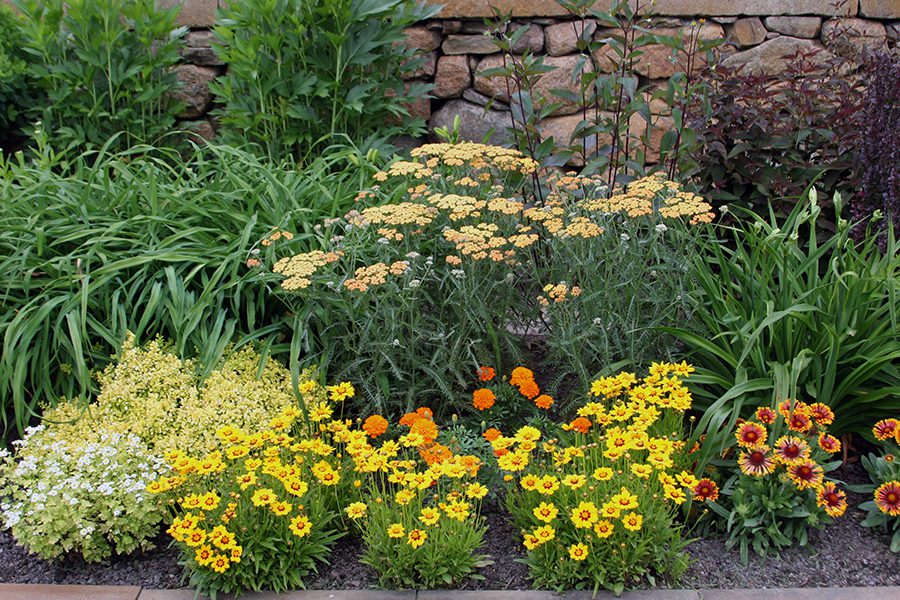
4. Annuals and Perennials If you love flowers, chances are you’ll want gardens that combine annuals (plants that don’t live through the winter, so you plant them annually) and perennials (plants whose roots live through the winter so they usually return in the spring). Perennials don’t flower all summer, but many of them are in bloom before we can put annuals into the garden in the spring. By combining the two, you will have flowers for many months.

5. Shrubs It’s smart to include flowering shrubs in a garden. They can be good background plants for perennials and annuals. Hydrangeas are especially nice in a flower garden because they flower for such long periods of time.
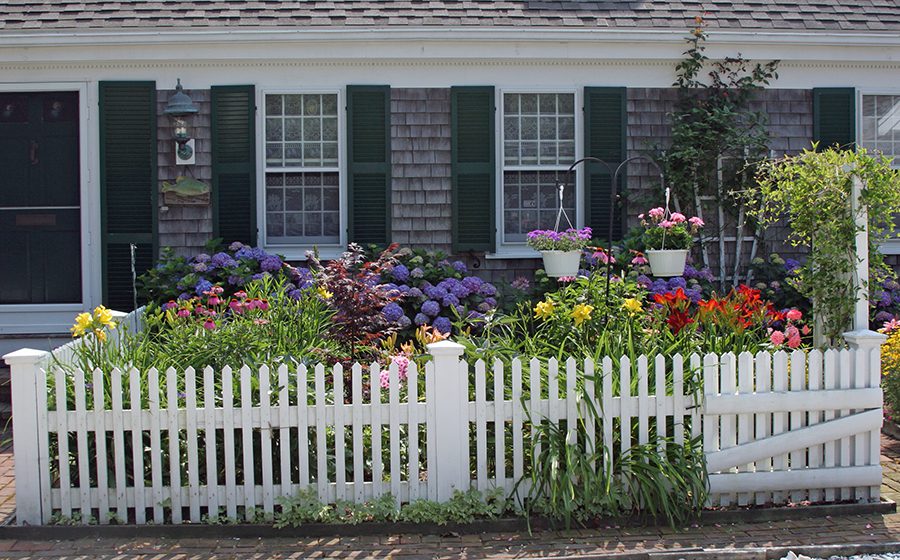
6. Plant in puddles, not polka-dots. The most striking gardens contain groups of plants instead of single specimens. When you’re first starting out, it’s fine to plant one of these and one of those so that you can see how a plant behaves.You will learn which plants bloom for the longest period or which perennials spread quickly or don’t spread at all. Once you discover flowering plants that grow well in your garden, plant more of them. Groups of three, five or seven plants, place in a group not a line, will create a showy, beautiful garden.
7. Watering Like most gardens, flower gardens are best watered deeply but less often. Since many sprinkler systems don’t deliver even levels of water when there are many plants of different heights, many water a flower garden with soaker hoses or a standard oscillating sprinkler. To learn how long you should water, wait for five or six days after a rain, then turn on your system for two hours. Dig down into the soil and see if your garden is moist a foot down. If it is, that’s a good amount to water every five to seven days. If your soil isn’t moist that far below the surface, water longer. Whenever possible, water in the morning so that the flowers and foliage can dry out in the afternoon.
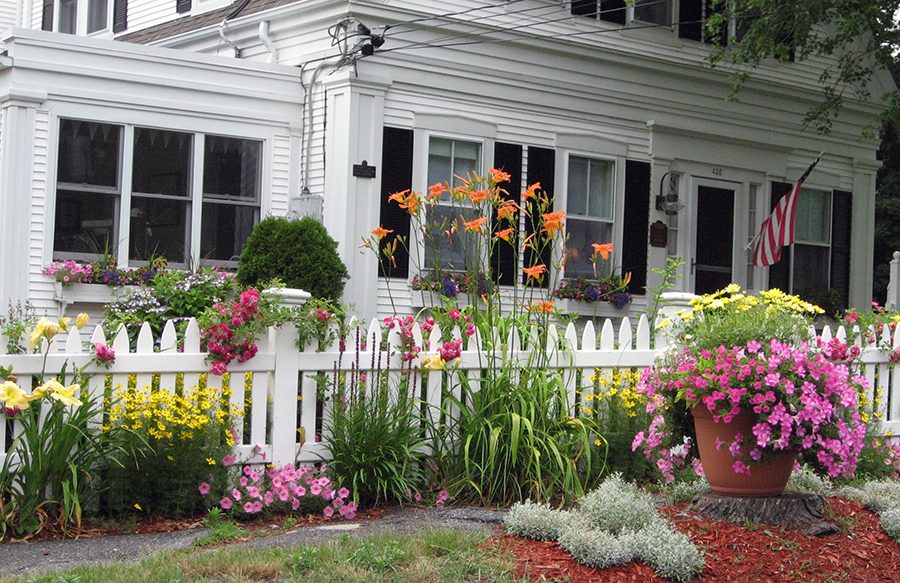
8. Fertilizing Most perennial flower gardens do well with one application of an organic fertilizer, applied in the spring. Flower-tone is a good, general fertilizer that you can use on all types of plants. Some perennials benefit from either a second application of Flower-tone in June: daylilies, true lilies, and Russian sage are three perennials that benefit from this second application. Annuals have a short season to grow and flower, so these do best when planted with a time-release fertilizer such as Osmocote or Shake n’ Feed. Mix one of these into the garden. For season-long feeding of annuals, mix equal parts of Flower-tone or Plant-tone with one of the time-release fertilizers and use this mix when you plant. The time release feeds immediately and through mid-summer, and the organic fertilizer kicks in for late-summer and fall.
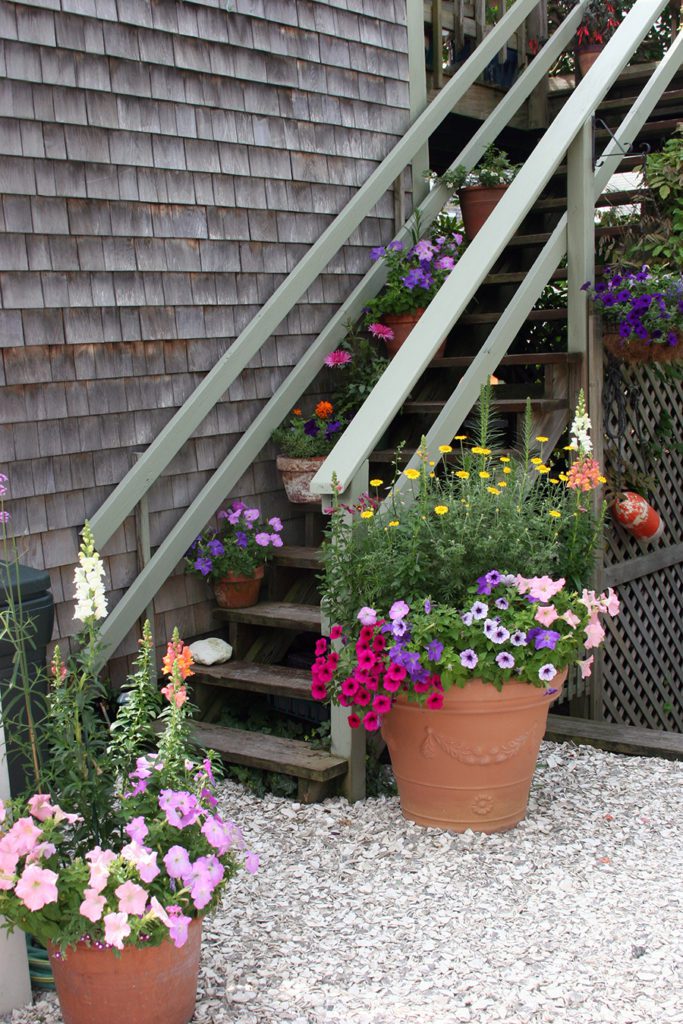
9. Deadheading This is a term for removing the wilted or browned flowers once they are finished blooming. Deadheading is beneficial because it immediately improves the look of the garden. For some flowering plants, snipping off the finished flowers stimulates them to form additional blossoms.

10. What to do if the flowering stops. Some new gardeners find that their flower garden is beautiful in June and July, but doesn’t have much color later in the summer. When this happens, find a few late-blooming perennials or shrubs and place them in your garden. Annuals are also the perfect plants for end-of-summer and fall flowers. Make a list of a few short, medium and tall annuals that you can include in the garden next year. Also, Country Garden always has annuals for sale later in the summer that can be put into the late-season garden. Know that early flowering perennials can often be cut to the ground or sheared in half in July, opening up places where you can place annuals. Nepeta, Penstemon and Salvia, for example, can be clipped down by half or even cut to the ground so that some late-flowering annuals can be planted.
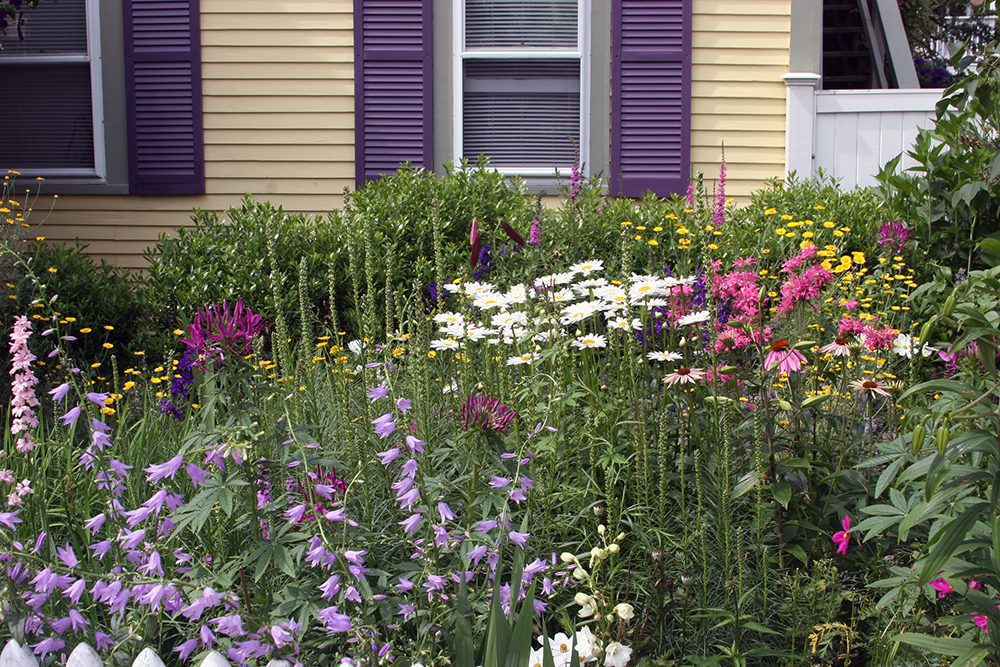
Know that a flower garden is never finished, which is a good thing! You’ll enjoy watching it change and evolve over the summer and through the years. Take plenty of photos, and enjoy the creative process.
Subscribe To Our Newsletter
Sign up for our weekly email about sales and events.
